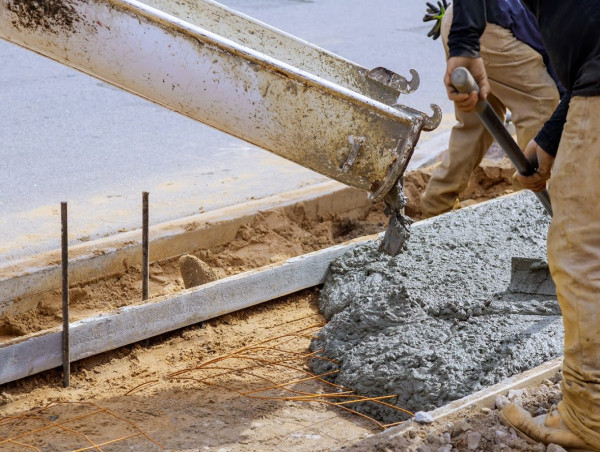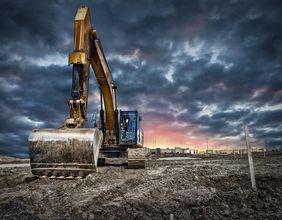Small, often overlooked symptoms serve as early warnings that pavement maintenance or repair is needed. Addressing these indicators promptly helps preserve structural integrity, maintain aesthetics, and improve safety for drivers and pedestrians.
Jules Albert III, owner of Jaymar Construction LLC in Slidell, Louisiana, emphasized the value of proactive identification of pavement concerns.
"Small signs of wear are easy to ignore, but they often signal the beginning of much larger failures. Early intervention protects the structure, extends its life, and keeps overall repair costs lower," said Albert.
One of the most common early indicators is the appearance of surface cracks. Fine, hairline cracks, often referred to as alligator cracking when forming a network pattern, suggest underlying fatigue in the pavement layers. These cracks allow water infiltration, which weakens the base materials and accelerates deterioration if not sealed in a timely manner.
Another visible sign is surface discoloration. New asphalt typically appears dark black, but ultraviolet (UV) exposure and oxidation lighten the surface to gray over time. Fading indicates that the binder holding the asphalt together is breaking down, making the surface more brittle and vulnerable to cracking and raveling.
Pooling water on the surface is another red flag. Properly constructed pavement is designed to shed water efficiently. If puddles form, it suggests issues with surface grading or underlying compaction failures. Standing water not only worsens surface defects but also undermines the subbase, leading to potholes, depressions, and eventual structural failure.
Edge cracking and crumbling are additional early warning signs. Pavement edges are often the first areas to experience stress because they are less confined than interior sections. Erosion, vehicle overrun, and insufficient support can cause edges to crack, break away, and lead to more extensive damage if repairs are delayed.
Surface raveling, where aggregate particles become loose and the pavement surface feels rough or gritty, indicates that the asphalt binder has degraded. This process exposes more surface area to water and sunlight, accelerating wear. Raveling usually starts subtly but can quickly develop into larger areas of surface loss.
Uneven settling, known as rutting or depressions, may appear in areas with heavy traffic loads, especially under the wheels of frequent vehicles. These depressions trap water and concentrate stress on weakened spots, significantly increasing the risk of surface failure.
Small potholes often follow unchecked cracking, raveling, and settling. Even minor potholes allow more water infiltration and create hazards for vehicles and pedestrians. Early patching of small potholes prevents them from expanding and avoids further degradation of the surrounding pavement.
Weeds and grass growing through cracks also signal a maintenance need. Vegetation roots widen cracks and accelerate pavement separation. The presence of plant growth indicates that cracks have reached depths that allow soil-based intrusions, jeopardizing the pavement’s substructure.
Changes in traffic patterns can influence pavement wear. New developments, increased usage, or changes in vehicle types can stress pavement in ways it was not originally designed to handle. Monitoring how traffic loads evolve over time can reveal emerging pavement issues that require upgrades or reinforcements.
Drainage system performance directly impacts pavement longevity. Blocked or poorly functioning drains allow water to back up onto paved surfaces, compounding all water-related deterioration effects. Regular inspections of curbs, gutters, catch basins, and surface grading help prevent hidden water damage.
Surface irregularities in concrete pavements, such as scaling, pop-outs, and spalling, offer additional signs of distress. These conditions often indicate freeze-thaw damage, deicing chemical impacts, or poor finishing techniques during construction. Concrete damage tends to progress slowly but leads to significant durability losses if left unaddressed.
Recognizing and responding to early signs of pavement distress allows for cost-effective maintenance strategies such as crack sealing, patching, overlay resurfacing, and minor subbase repairs. These methods preserve existing structures and defer the need for full-depth reconstruction, saving time, money, and resources.
Comprehensive pavement management programs rely on routine inspections, condition assessments, and predictive maintenance planning. Proactive care addresses minor defects before they evolve into major liabilities. Investing in early repairs helps maintain serviceability, appearance, and safety across all types of paved surfaces.
Regional climate patterns also influence pavement wear. In areas like Louisiana, high heat, heavy rainfall, and humidity levels accelerate material breakdown. Accounting for local environmental factors in design and maintenance planning helps improve pavement performance and lifespan.
Jaymar Construction LLC continues to work closely with property owners, managers, and municipalities to provide guidance on recognizing early pavement problems and implementing timely repairs that protect infrastructure investments across the Gulf South.
Preventative action remains the most effective approach to maintaining strong, durable, and safe pavement systems in the face of natural wear and operational demands.
Morgan Thomas
Rhino Digital, LLC
+1 504-875-5036
email us here
Visit us on social media:
Facebook
Legal Disclaimer:
EIN Presswire provides this news content "as is" without warranty of any kind. We do not accept any responsibility or liability for the accuracy, content, images, videos, licenses, completeness, legality, or reliability of the information contained in this article. If you have any complaints or copyright issues related to this article, kindly contact the author above.
![]()






